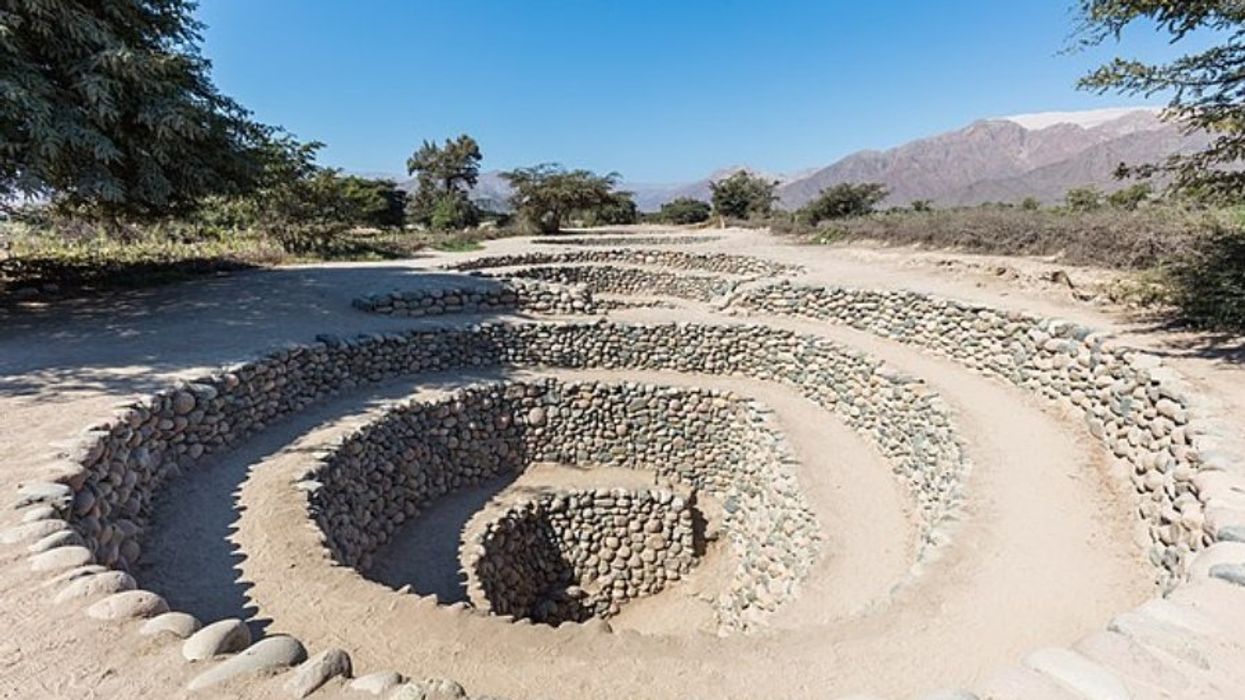
From above, the Cantalloc Aqueducts look like an artistic installation of some sort, strings of aesthetically pleasing spirals lined up in perfect rows. But these pre-Inca-era creations have a perfectly practical purpose.
The Cantalloc Aqueducts are the best known part of the aqueduct system built by the Nasca (also spelled Nazca) people some 1,700 years ago in the desert of southern Peru. Due to the scarcity of water in this region—droughts here can last for years—the Nasca relied on getting water from the underground water table. But they didn’t just create traditional wells to access the aquifer. They constructed an elaborate—yet brilliantly simple—system to channel water from the aquifer wherever they wanted it to go.
The spiral structures, called ojos (“eyes” in Spanish), are made of stone and wood up to 45 feet (15 meters) deep, and they connect to a series of underground aqueducts and surface channels (known collectively as puquios) that irrigate the arid landscape for farming and provide water for domestic use. Up until 2016, it was assumed the ojos were used as wells and access points for maintenance of the aqueducts. But Rosa Lasaponara and others from the Institute of Methodologies for Environmental Analysis in Italy discovered another reason for their shape.
Using satellite imagery to get a clear picture of the entire puquios and how the water was irrigated, Lasaponara and her team found that the spiral-shaped holes actually funnel wind down into the underground channels, helping push the water through the aqueducts like a pump.
Lasaponara’s study also provided insight into the age of the system, which many had believed had been built by the Spanish. Because the structures are made from the materials from the local terrain, they can’t be carbon dated. There is no written record from the Nasca in that time period, but the settlements the channels ran to provide strong evidence for Nasca origin.
It’s a feat of hydraulic engineering that required an advanced understanding of how land, water and air work together, and the fact that most of these ojos are still in use today is a testament to the skills of the ancient people in this area of Peru.
The Nasca Aqueducts were submitted to be named a UNESCO World Heritage Site in 2019 and are currently on the organization’s “tentative” list. As the submission on the UNESCO website states:
“This system was built in the middle of one of the driest and most arid desert territories of the world, where there is no surface water during most of the year. In this context, the water obtained by means of ingenious aqueducts serves not only for human consumption but also to irrigate the crop fields, with which fertile oases were created in the middle of the immense desert.
The Nasca Aqueducts were made based on advanced knowledge of geology and hydrology and since its construction, almost two thousand years ago, it has been used permanently by the societies that succeeded its builders and is still in operation until today.”
Learn more about the Nasca aqueducts here.
